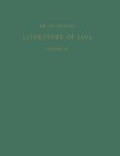Abstract
The examples of various kinds of Javanese script which are discussed in the following paragraphs have been provided with romanized transliterations, translations and notes
Access this chapter
Tax calculation will be finalised at checkout
Purchases are for personal use only
Preview
Unable to display preview. Download preview PDF.
References
Pitāmaha, grandfather, seems to be a Sanskrit translation or equivalent of Kyahi, a common title of revered men of religion. A hypothetical solution of the enigma of the text is : the kyahi of Kélasa, a spiritual master of local renown, was given a mark of the reverence felt for him by the Ma????ulihis. In his honour, and according to his wishes, the cult of Haricandana was instituted. The local laird of Kapuhunan was prevailed upon by the clergy to provide the means. He was told that he and his family would be blessed for this mark of piety.
For the names of groups of men of religion in preIslamic Java the reader is referred to the Glossary in the fifth volume of the present author’s “Java in the XIVth Century”.
Probably this sentence refers to the male and female components of Creation.
Probably this sentence refers to the insignificance of worldly conditions compared with the bliss felt by the faithful.
Beside the six panérans (walis, apostles of Islam) who are mentioned on this side of the palmleaf (Kajoran, Bantĕn, Cĕrbon, Ŋadi Lanu, Kali Jaga and Kudus), there are four more, listed on the reverse side : the panérans of Alas, Bonan, Majagun and Ŋampèl Dĕnta, all with their own maxims. It is a remarkable fact that Giri is missing. Alas is seldom found in lists of walis. It is unusual to make a distinction between Ŋadi Lanu and Kali Jaga.
Pratimah, i.e. Fātima, the Prophet’s daughter, appears in this text as the primordial woman and the ideal of womanhood.
Beside the three female nabis (prophetesses). Nuriyah, Mariyém and Supiyah, who are mentioned on this page of the manuscript, there are four more listed on the following pages : Supini, Salamah, Almunah, and Kildakiyah.
The scribe wrote, by mistake, a superfluous akṣara s. He eliminated this s by providing it with two vocalization marks, which makes it unpronounceable.
The sequel of the tale is as follows. Ujun Sabata can not find Arya Wahan, who is hid by his wife. The grand vizir is tricked to betray his hiding-place, however : he calls out to a servant to go and look after his pet horse which he hears running about in the yard. Knowing the noble lord’s solicitude for his horse Ujun Sabata had set the animal free on purpose.
According to Rouffaer’s comparative table of years according to the Islamic (A.H.), Javanese (A.J.) and European (A.D.) calendar (in the article on “Tijdrekening” in the “Encyclopedie van Nederlandsch Indië”) the year A.H. 1162 (A.J. 1674) was not a year Bā (in Javanese called Bé) but a year Khā (in Javanese called Jim Akir). Rouffaer has made clear, after a long study of Javanese chronology, that the year-letters (originally numbers) of the octennial, socalled windu cycle, were changed several times in the course of the centuries. It seems that the system of the Bantĕn court of justice was different from Rouffaer’s (Central Javanese) standard.
As the Arabic grammatical terms need much explaining the rest of the Arabic notes is left untranslated. The notes are irrelevant in the present book.
Author information
Authors and Affiliations
Rights and permissions
Copyright information
© 1970 Springer Science+Business Media Dordrecht
About this chapter
Cite this chapter
Pigeaud, T.G.T. (1970). Facsimiles of Pages of Hand-Written Texts. In: Illustrations and facsimiles of manuscripts, maps, addenda and a general index of names and subjects. Springer, Dordrecht. https://doi.org/10.1007/978-94-015-2567-1_2
Download citation
DOI: https://doi.org/10.1007/978-94-015-2567-1_2
Publisher Name: Springer, Dordrecht
Print ISBN: 978-94-015-1456-9
Online ISBN: 978-94-015-2567-1
eBook Packages: Springer Book Archive

